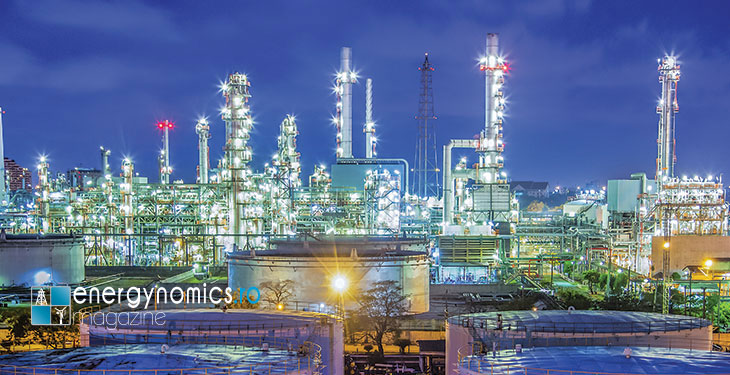From July 2014, gas producers in Romania were required to sell part of their production on the exchange. Transactions have started to take place starting from the autumn of 2014, on the Romanian Commodities Exchange (BRM). In November 2015, when OPCOM announced its first transaction on PCGN-LP platform. In the meantime, BRM has managed to revive this market, with 300 auctions until late October, and with a total amount of over 45TWh. We learned from Florin Tudorache, Head of Gas Division at the Romanian Commodities Exchange, how BRM managed to substantially increase the number of auctions and volumes put up for trading.
Dear Mr. Florin Tudorache, large producers have this obligation to sell certain amounts on the exchange. However, a real market is still far away… What are the obstacles that still hinder a quicker growth of the gas market through the Exchange?
It’s true that ANRE, under Order 118/2014, established an obligation to trade gas on the centralized markets of 35% for producers and respectively 30% for suppliers. These rates are valid only for 2015, in 2016 they are lower by 5%, in 2017 they will also drop 5%, and the same in 2018.
It should be emphasized however that this obligation refers only to amounts remaining available after the producers cover their obligations on the regulated market (mainly for household consumption) and their obligations under long-term bilateral contracts. Specifically, the gas amounts remaining to be traded on the competitive market are very small compared to total production in a year.
The centralized gas market is developing. We had a significant increase in the number of suppliers registered on the Gas Exchange Floor, and now there are 42 suppliers, the best of a total of around 120 licensed. Besides figures, I also highlight the quality of the trading activity. In the past we had one or maximum two suppliers accessing the floor in an auction, and we are now talking about 5, sometimes even 8 suppliers that actually compete to gain the contract with an end-consumer. Thus, they are very active and combative, each of them trying to increase or keep their market share.
What holds us back or, better said, slows our momentum, is the low level of economic education. There are many people who don’t understand the economic mechanisms or, even worse, there are – it is true, increasingly few – those who don’t want to accept these economic mechanisms and continue the tradition of bribe.
An important problem we are facing is the lack of harmonization of the legislation governing public procurement with the legislation on gas sales. On the one hand, the public purchaser requests, under the legislation governing it, performance guarantees and an extremely bureaucratic and complicated documentation, expecting from the supplier contractual flexibility and a low supply price. On the other hand, if the supplier rightfully requests the balancing of contracts, respectively contractual provisions “in the mirror”, including for performance guarantees, then the unchanging answer of the purchaser is “the law does not allow us”.
Existence of several laws governing different sectors of activity, which at a certain point intersect, leads to serious distortion of economic reality. For example, everyone knows that there is an Electronic System of Public Procurement, the famous SEAP, which the public purchaser is required by law to use. Nobody wonders whether SEAP have received a license of centralized gas market from ANRE.
I had two big surprises, when I was invited at the Ministry of Communications for a procurement procedure through BRM. First, I learned that we were preferred for this type of procedure even though that specific ministry has SEAP in its direct subordination. The second surprise was to understand that SEAP doesn’t even raise the problem of ANRE accreditation or licensing, even if it trades gas in electronic system, as any other centralized market.
What are the reasons for this increased number of transactions on BRM?
BRM had the great inspiration to involve in its ranks people specialized in the natural gas industry. Nobody has considered so far in Romania to open a centralized market only for gas suppliers. Now, with help from my colleague, Arta Ţurcanu, who is Director of the Gas Department at BRM, there is an electronic platform specialized only for suppliers – our STEG platform.
Soon, again due to efforts taken by Mrs. Arta Ţurcanu, we will also establish links with West Europe, we will be able to report our transactions in accordance with the REMIT regulation to the European Agency ACER. People with many years of experience in the gas industry – this is our secret. Otherwise, we couldn’t know the needs of the market and offer at the right moment the right solutions for each type of customer. STEG platform and REMIT reporting are useful and efficient tools offered by BRM to participants to the Gas Exchange Floor in due course, i.e. when the market needs them, and, of course, they give us the advantage and status of leader of centralized markets.
Please make a profile of participants to gas transactions on BRM – sellers and buyers.
First, transactions are split into two large categories:
1. Transactions only between suppliers, here the directions of sale are two-way, depending on individual needs;
2. Transactions initiated by end-consumers (on purchase direction), in which suppliers come as sellers.
Each category has its particularities, but the profile of the standard participant from suppliers is: medium to large company, in terms of amounts available, able to supply gas anywhere in the country and willing to develop its portfolio. Most often, they are companies supported by a multinational company, with very clear and strict internal procedures to solve any complaints or claims coming from consumers.
A “standard” profile of consumer is more difficult to mention. Consider only how many hundreds of thousands of non-household consumers are currently in our country! Instead, I can enumerate, on the basis of similarity of work performed, consumer groups in 2015 and the number of those who accessed the Gas Exchange Floor: 16 municipalities, 24 hospitals, 8 county police inspectorates, 6 inspectorates for emergencies, 6 higher education institutions, 14 military units, 3 county councils and 2 airports.
————————————-
The full version of this article can be read in printed edition of energynomics.ro Magazine, issued on December 2015.
In order to receive the next issue (March 2016) of energynomics.ro Magazine for free, we encourage you to write us at [email protected] to include you in our distribution list.

